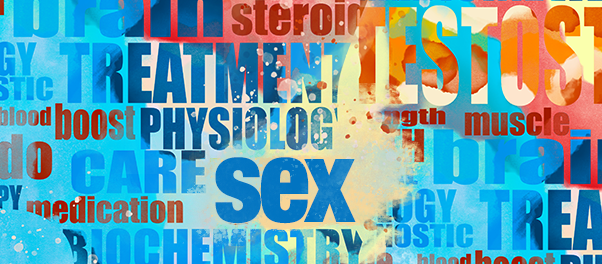With a 10% reduction in adverse childhood experiences, the CDC predicts the North American healthcare system to save $56 billion annually. Understanding these correlations between early childhood and adult longevity allows healthcare professionals to treat their clients with a comprehensive plan.
Reaching for a Healthier Life: Facts on Socioeconomic Status and Health in the U.S. by The John D. and Catherine T. MacArthur Foundation Research Network on Socioeconomic Status and Health states, “Societies are structured like ladders…Your position on the ladder predicts how long you live and how healthy you are during your lifetime.”
In Reaching for a Healthier Life, Dr. Nancy Adler et al. affirm individuals lower on the socioeconomic status ladder are more likely to experience the subsequent health problems:
- Newborn problems (premature birth, low birth weight, congenital disabilities)
- Signs of future disease (high blood pressure, obesity, weak immune system)
- Chronic disease (diabetes, heart disease, cancer)
- Infectious diseases (HIV, AIDS, common flu)
- Disabilities (blindness, mental illness, decline of physical strength)
| In an opening keynote address to a Harvard School of Public Health audience, Melody Goodman, a health biostatistician, shared that zip code is a better predictor of an individual’s health than their genetic code is. A zip code showcases an individual’s ability to prevent long-term health disparities because of factors such as socioeconomic status, location-specific schools, and medical services. For example, food deserts are long stretches in cities with limited access to nutritious and reasonably priced food. Factors like access to affordable healthcare, grocery stores, after-school, and daycare programs all play a role in the negative impacts of location-related health predictions. |
|
Dr. Nadine Burke Harris, formerly the Surgeon General of California, produced research on adverse childhood experiences (ACEs) and toxic stress. An adverse childhood experience is a potentially traumatic event such as abuse, violence, or poverty. She remarks childhood trauma increases risk for seven out of the ten leading causes of death. Approximately 61% of adults have experienced at least one Adverse Childhood Experience (ACE). The CDC also asserts 1 in 6 adults experienced four or more adverse childhood experiences.
What is Childhood Trauma?
Childhood trauma refers explicitly to the trauma individuals face in their development as a child. The main categories of trauma include:
- Physical abuse
- Emotional abuse
- Sexual abuse
- Neglect
Children who witness or experience traumatic events are at risk for physical and mental illness. These illnesses include substance use and mental health conflicts as children age. There are different age ranges to describe childhood trauma, such as the distinction between if the event occurs in early childhood (0-6), early adolescence (10-13), or middle adolescence (14-17). Younger children in early childhood are less able to understand and process traumatic events, so they react in nonverbal ways like emotional outbursts, poor verbal skills, and memory problems. Older children exhibit behaviors like physical aches, lack of trust, or learning disabilities.
The effect of trauma wreaks havoc on children in many ways by altering their stress response, triggering autoimmune disorders, and dysregulating several major hormonal pathways in the body. Trauma impacts necessary physiological functions like the HPA axis, the fight-or-flight response, and reward circuits.
Types of Childhood Trauma
- Bullying
- Community Violence
- Complex or Compounded Trauma
- Disasters
- Intimate Partner Violence
- Medical Trauma
- Physical Abuse
- Refugee Trauma
- Sexual Abuse and Sex Trafficking
- Terroism and Violence
- Traumatic Grief or Bereavement
What Determines How a Child Reacts to Trauma?
Similar to how every individual who faces a trauma may not develop a stress disorder, several protective factors exist for children who experience trauma. Resiliency or protective factors include:
- Strong familial or guardian support.
- Length and severity of the traumatic event.
- Strong integration in a social community like team sports or extracurricular clubs.
- Guided therapy and coping mechanisms.
Adults who believe and support children during traumatic events are more likely to help children cope with traumas mitigating long-term health effects. Adults who take children to mental and behavioral healthcare professionals with an encouraging mindset also curb potential risks.
Individuals who experience trauma vary in their resiliency levels. Children with higher resiliency are more likely to overcome the negative health outcomes of their adverse childhood experiences. Resiliency, physical or psychological, is a factor which matters when a child experiences trauma. Resilience refers to a complex, multidimensional trait with links to positive coping, social and emotional support, as well as meaning and purpose, according to Joan E. Haase, Ph.D. and RN in the Adolescent Resilience Model as a Guide to Interventions.
Signs of PTSD in Children
Depending on the stage of development a child is in, signs may vary. Younger children are unable to verbalize their trauma, so it is essential to be vigilant of physical indications on the body and inappropriate age play.
The criteria diagnosis of PTSD requires at least one symptom from each subset of symptoms, including avoidance, intrusions, negative alterations in cognition, alterations in reactivity and arousal, and duration of the disturbance.
According to Stanford Children’s Health, the following are signs of posttraumatic stress disorder (PTSD) in children:
- Sleep Troubles
- Depression or grouchiness
- Nervousness, alertness, or hypervigilance
- Loss of interest, numbness, or unresponsiveness
- Trouble with affection
- Aggression or violence
- Avoidance of certain people, places, or things
- Flashbacks or loss of touch with reality
- Reenactment ranging from seconds or hours to days
- Behavioral or academic problems at school
- Focus issues
- Preoccupation with death at an early age
- Behavioral regression (thumb-sucking or bedwetting)
- Physical symptoms (headaches or stomachaches)
Signs of Unresolved Childhood Trauma in Adults
The following list consists of indicators of unresolved childhood trauma in adults:
- Substance misuse, dependency, or abuse
- Stress, anxiety, mood, or personality disorders
- Behavioral issues or emotional immaturity
- Inability to deal with confrontation or conflict
The list of health conditions, or negative outcomes, consists of depressive disorder, chronic obstructive pulmonary disorder, asthma, kidney disease, stroke, coronary heart disease, cancer, diabetes, and obesity. Females and minorities hold a higher risk of experiencing four or more adverse childhood experiences (ACEs).
The CDC predicts treatment of adverse childhood experiences may act as a preventative measure, potentially reducing negative outcomes of childhood. This includes up to 21 million cases of depression, 1.9 million cases of heart disease, and 2.5 million cases of overweight/obesity.
Therapy Techniques for Healing Childhood Trauma in Adults
Therapy is specific to the individual receiving treatment, so the best technique makes an individual feel comfortable and able to process their past. The most researched, evidence-based approaches to childhood trauma are:
- Cognitive Behavioral Therapy (CBT)
- Dialectical Behavioral Therapy (DBT)
- Eye Movement Desensitization and Reprocessing (EMDR)
2.) Dialectical Behavioral Therapy (DBT) is a practical treatment choice for mental disorders because the focus of the therapy includes emotion regulation, mindfulness, and stress tolerance. DBT is well-recognized by clinicians who treat mood and personality disorders. Most recognize DBT as the therapy treatment plan for individuals with Borderline Personality Disorder. For healthcare providers interested in broadening their clinical skills, CONCEPT Professional Training provides DBT Certification.
3.) Eye Movement Desensitization and Reprocessing (EMDR) is a psychotherapy technique that involves a clinician facilitating an individual to access traumatic memories by providing a guide for their eye movement while the client processes the situation psychologically. This form of therapy is associated with Posttraumatic Stress Disorder. Research on EMDR demonstrates significant improvements in individuals who experienced a singular traumatic event or veterans in as little from six to twelve sessions.
Additional treatment styles consider less evidence-based approaches and are still therapeutic, like art and play therapy.
1.) Art Therapy is a highly specialized field combining the role of a healthcare professional and artist. Art therapy requires thorough training to understand how to interpret the psychological aspect of the art an individual creates. Art therapists utilize art as a form of storytelling, emotion processing, and a way to keep individuals physiologically calm when dealing with past trauma. Because art therapy is a distinctive field, research on its effectiveness is limited compared to CBT and DBT.
2.) Play Therapy is a choice popular for children recovering from trauma, but emerging research demonstrates it may be effective for adults to engage in play therapy. This concept is commonly referred to in popular media as indulging an individual’s inner child. Rather than age regression, play therapy allows adults to process emotional experiences and childhood memories with a professional. The Association for Play Therapy produced a workshop called “Play Therapy Across the Life Span,” discussing play therapy techniques appropriate for most ages, from university students to the elderly. Play Therapy is a specialized field similar to art therapy, and a healthcare provider needs additional training to utilize play therapy properly in their adult sessions.
























